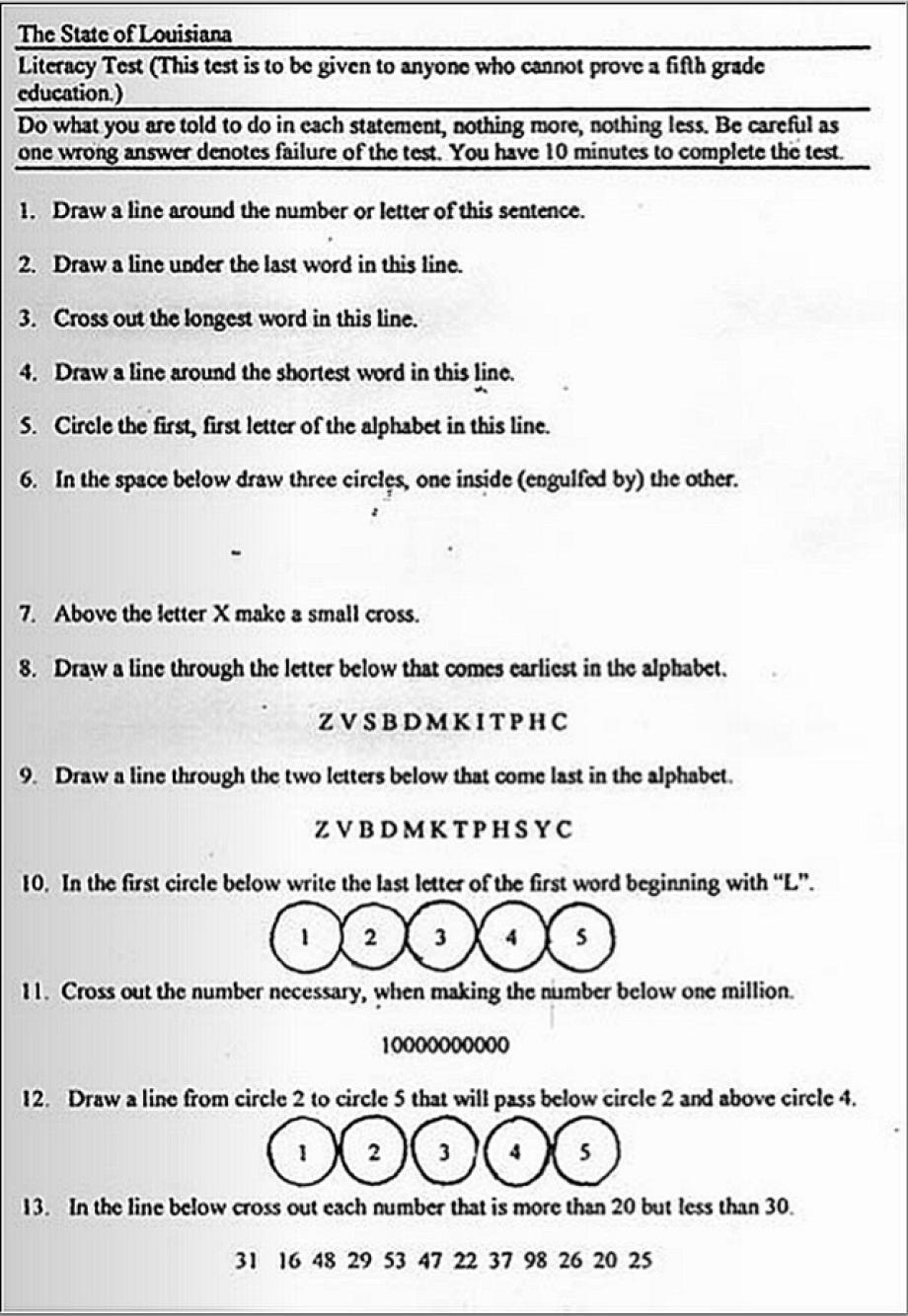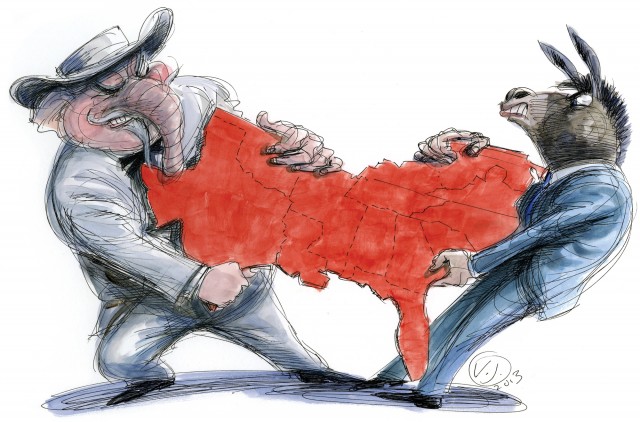You’ve probably heard of the term “solid south” at some point, probably in your history class. In short, the solid south refers to the political allegiance of the southern states. Historically, it was a block of Democrat blue. Today, it is typically a block of Republican red. What made the south switch? Is it as solid today as it once was?
Defining the Solid South
Often when the term “solid south” is used, it is to refer to the Democratic support in southern states from 1877 to 1964. Officeholders and Representatives would have been Democrat, as they opposed federal involvement in the South and governed to protect southern interests. Republicans – who were interested in clamping down on segregation – were considered unelectable. The South had a one party system, with Republicans quickly being voted out of office.
That is not to say that the South was completely devoid of Republican officials. During the solid south era, Kentucky, Tennessee, and West Virginia did vote Republican in some presidential elections. These states did have a degree of Union sympathy during the Civil War – particularly West Virginia which seceded from Virginia and the Confederacy in 1861. Most of these states’ voting for Republicans on occasion can be attributed to the antebellum era (pre Civil War). The terrain of these states – particularly West Virginia, as it is part of the Appalachian Mountains – did not favor cash crops like cotton that required expanses of flat land. Kentucky and Tennessee were too far north from the “cotton belt” with their climates being too cold. As such, these three states had little need of slavery, since it was largely used for the cultivation of cash crops. Tennessee and Kentucky, although represented on the Confederate Battle flag, did not join the Confederacy, nor did they fight for it.
Compromise of 1877

We have to understand what caused the solid south to arise. It starts with the Compromise of 1877. This came about from the disputes of the 1876 election as there were disagreements over who really won the election. After the first count, Democrat Samuel Tilden was in the lead with 184 electoral votes. Republican (and eventual winner) Rutherford B. Hayes trailed with 164 votes – but by that point, 20 votes were still unresolved.
The Compromise of 1877 was an unofficial agreement. Southern Democrats would acknowledge Hayes as the president, rewarding him the 20 votes needed to officially win the White House. In return, the federal government would remove all troops from the South – although by then there were only troops in Louisiana, South Carolina, and Florida. Other terms of the compromise are:
- At least one Southern Democrat would be appointed in Hayes’ cabinet. David M. Key of Tennessee was appointed the Postmaster General – the chief executive officer of the U.S Postal Service.
- Another transcontinental railroad was to be constructed using the Texas and Pacific Railway Company, connecting Marshall, Texas, and San Diego, California.
- Legislation to help with industrialization of the South to rebuild its economy.
- The right to deal with Southern African Americans however the Democrats wanted, without northern or federal interference.
The Compromise of 1877 marked the end of the Reconstruction Era of the South. To the South, Reconstruction was an era of occupation and submission to the Union. The Compromise enabled the South to enforce law however it wished – as long as it was within the laws of the Constitution.
Jim Crow
The solid south led to the era of Jim Crow. It was a series of laws and legislation that enabled white supremacy in the south, making African Americans second class citizens. Most notable about Jim Crow was the laws of segregation and disenfranchisement.
Wait, who was Jim Crow?

Jim Crow was never a real person. He was, however, a stage character performed by Thomas D. Rice – a white actor who blackened his face with burnt cork – between the 1830s and 1850s. Jim Crow was a caricature of a dimwitted slave, with Rice dressing in rags, imitating the slaves’ dialect and behaving absurdly on stage. By 1838, the term “Jim Crow” was a slur aimed at black people. It was used to imply a lack of intellect or a low work ethic.
Rice’s character helped to popularize the negative stereotypes of African Americans. White people would consider African Americans as lazy, unintelligent, and unworthy of integration into their society.
Back to the Solid South…
Democrats made their own legislation regarding voting rights through the exploitation of loop holes in the constitution. African Americans would be disenfranchised through polling taxes and impossible literacy exams. Take a look at the literacy test below. It was the test for the state of Louisiana in 1964. See if you can answer the questions – all in ten minutes. If you failed the test, the state deemed you unfit to cast a vote.



The odds of actually completing all 30 questions in ten minutes and getting all of them right were very slim.
The purpose of the literacy test was to demonstrate a level of education high enough to be capable of casting a vote. Such tests were disproportionately given to African Americans. If it was given to all of the population, few of the white population would have been not eligible to vote as well.
These tests were a factor in maintaining a Democrat solid south. If African Americans were able to vote, they would have no reason to vote for the party that disenfranchises them.
What Changed? Why Did The South Start Voting Republican?
What changed was the Democrat agenda in the 1960s. Realizing that they could not appeal to the African American vote in the north, Democrats began to back the Civil Rights movement to appeal to African Americans. The beginning of the end of the Democrat solid south began in 1960 with the election of John F. Kennedy. For starters, he was a southern outsider (being from Massachusetts) and unable to relate to southern issues. Kennedy was also a Catholic, making him a religious alien to the mostly Southern Baptist south. Kennedy also pushed authorities for the release of Martin Luther King from jail, who had been arrested for his involvement in the Montgomery Bus Boycott. King’s father endorsed Kennedy for his efforts, earning him support from the black community.
The 1964 election shows that the Deep South (Louisiana, Mississippi, Alabama, Georgia, and South Carolina) had abandoned the Democrat Party and had voted Republican. With the Democrats appealing to the black vote and engaging in the Civil Rights movement, the South felt abandoned by the party, so switched to Republican.

In 1968, the South voted for the American Independent Party. The candidate was George Wallace, with Curtis E. LeMay as Vice President candidate. Wallace was a segregationist and a populist, having declared “segregation now, segregation tomorrow, segregation forever” at his gubernatorial inauguration in Alabama, 1963. That same year, he stood in front of the doors of the University of Alabama to prevent black students from entering. Similar to Nixon, Wallace ran a “law and order” campaign. But Wallace appealed to the South through his continued support for segregation – despite the fact that segregation had been outlawed by the 1965 Civil Rights Act. The AIP was short lived in the South. In the 1972 election, the region voted Republican.
The Modern Solid South
The Republican Party is largely associated with conservatism and tends to be religious, appealing to the South’s conservative and religion-heavy culture. The modern solid south did not come about until quite recently. It appeared in the 2000 election, voting overwhelmingly for Republican, George W. Bush.
Although in 2008 Florida and North Carolina voted Democrat (with Florida voting Democrat again in 2012), the solid Republican south returned in 2016 with the election of Donald Trump. In the 2018 midterms, the region largely voted in favor of the Republican Party for governor, House, and Senate positions.
Will the South be the Solid Republican South again in 2020? It is hard to say at this point. Anything could happen, especially as the Democrat candidate has not yet been nominated. That said, the Democrat candidates thus far do not seem to appeal with the majority of the southern population.
If I was to guess, I would be inclined to believe that the Solid Republican South will be retained in the 2020 election.

Pingback: Elections, The American Way – What's Going On, America?